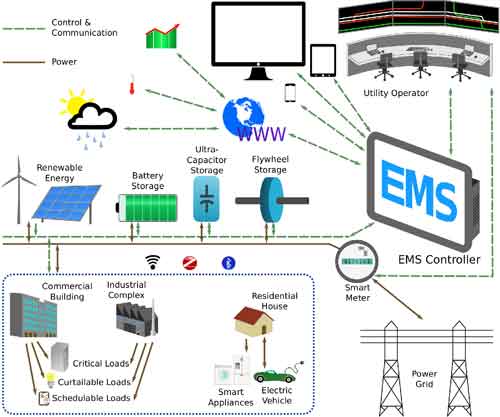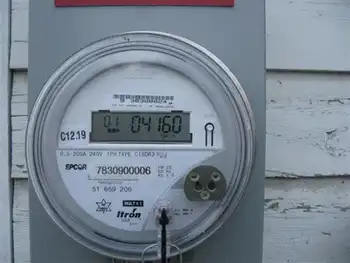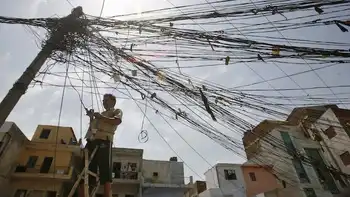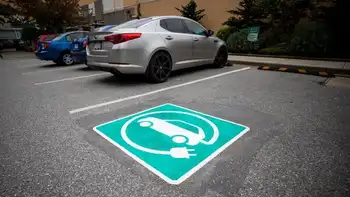Erect, connect, repeat: Solar, wind and Sempra
By San Diego Source
NFPA 70e Training
Our customized live online or in‑person group training can be delivered to your staff at your location.

- Live Online
- 6 hours Instructor-led
- Group Training Available
Will the environmental community heroically streamline the environmental review process required for such action or, instead, invoke delay through study and the courts? Likewise, will industry grumble and erect barriers, or cogently reinforce the urgency for necessary improvements? We are confronted with a great philosophical and practical challenge in global warming — compromising imagined perfection to achieve a vastly better tomorrow. In truth, nature is one huge, interconnected compromise.
On December 11, the California Air Resources Board (CARB) approved its global warming "Scoping Plan" to meet key Assembly Bill 32 (AB32) requirements. The report, implicating a large part of California's cultural and technological future, is a scant 142 pages, including an executive summary. The measures delineated are directed at stemming global warming and reducing greenhouse gas emissions to 1990 levels by 2020. For you and me, that's only 11 years.
The required analysis done by CARB predicts that in 2020, if we continue "business as usual," the total greenhouse gas production for California, as defined in AB32 (only a subset of the actual total for greenhouse gases produced), will be 596 million metric tons of carbon dioxide equivalents (MMTCO2E). The 1990 estimated target level is 427 MMTCO2E, with the required reduction estimated at 169 MMTCO2E, roughly 28 percent. The two largest contributing market segments are consumer demand for electrical power generation and transportation.
As part of its effort to substantially reduce greenhouse gases, the CARB has recommended that current Renewable Portfolios Standards (RPS) applied to utilities and presently set at 20 percent by 2010, be raised to 33 percent by 2020. As part of this recommendation, CARB tried to identify barriers to achieving this laudable objective. Chief among them: regulatory barriers, resources and transmission capabilities. The CARB coyly pointed out that success would require "greater coordination between energy policy; resource and transmission planning; and procurement." In reality, no amount of talk will get it done. It will take built, connected facilities — and lots of them — to make it happen.
As a step toward that end, Sempra Generation very recently finished construction of the 10-megawatt, 80-acre, multimillion dollar El Dorado Energy thin-film solar project. It was built in Boulder City, Nevada, to take advantage of the large number of sunny days. From the time a decision was made to construct to actual completion took six months — Nevada's Christmas present to the people of planet Earth.
On December 22, in response to "environmental public-policy initiatives and increasing demands for renewable energy projects that reduce greenhouse gas emissions," Sempra Generation announced the EnergÃa Sierra Juárez wind generation facility, its first wind power project, due online in 2012. Built in Mexico, it will supply clean, renewable power to San Diego via SDG&E's Sunrise Powerlink transmission line recently approved by the CPUC. Thus, the pieces are coming together and wise public policy is advancing. Now we need to accelerate California's pace of improvement.
To accomplish less laudable objectives, rule-making bodies have previously identified project categories which may bypass California Environmental Quality Act (CEQA) review as "categorically exempt." Consider: should select renewable energy project categories be subjected to similar regulatory streamlining thereby encouraging construction of much needed and, on balance, relatively benign facilities?
To achieve 33 percent renewable energy in utility portfolios will require vastly more renewable sources than are currently available. Equally important, as more renewable energy is transmitted on the power grid, the grid must be made stable against variability which is the hallmark weakness of renewable solar and wind-derived power.
Since electric power must be produced the instant it's needed, energy storage is the major challenge to incorporating larger percentages of renewable energy. To that end, "whoever cracks the nut of cost effective (electric power) storage is going to contribute a huge amount to people everywhere" pointed out Mike Allman. Mr. Allman is president of Sempra Generation, a Sempra Energy subsidiary, which completed the El Dorado solar project. He holds a master's in business administration and a degree in chemical engineering, and talks like a pragmatic environmentalist concerned with ratepayer costs and environmental values.
Among those trying to solve the electric grid power storage problem is Greensmith Energy Management System using lithium-ion battery packs and specialized software. Another, possibly less expensive, approach might use cost-effective, recyclable Maxwell ultra-capacitors in lieu of batteries. San Diego's ISE Corp has broad experience in building similar systems for hybrid buses, why not for the power grid?
Time is of the essence; wise construction, not environmental litigation and delay, is the answer.















